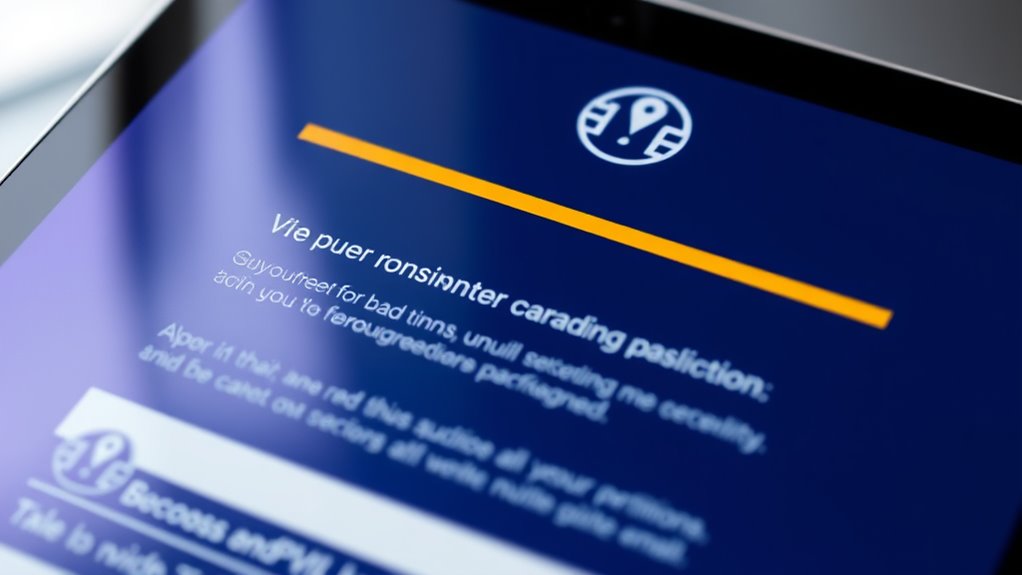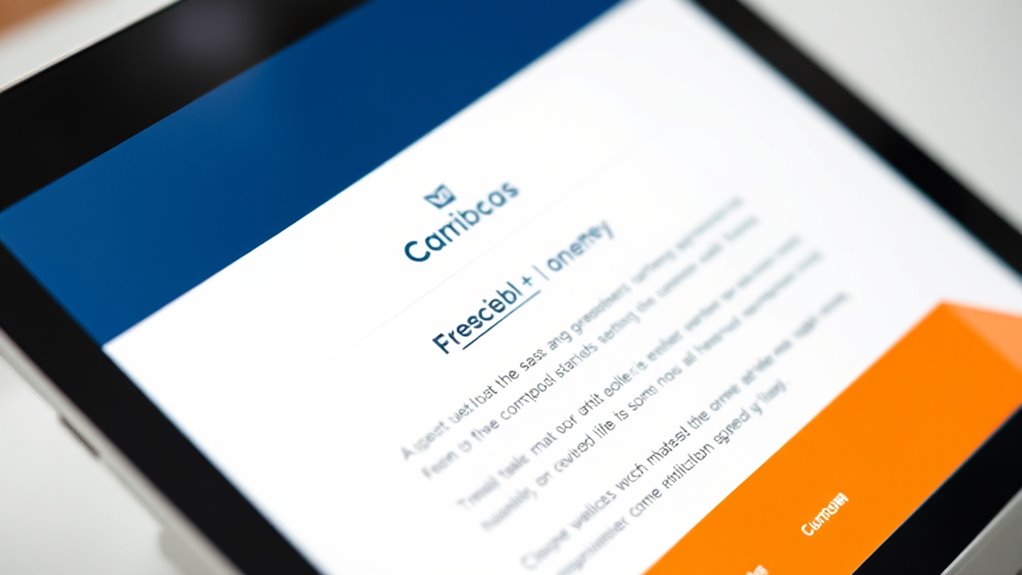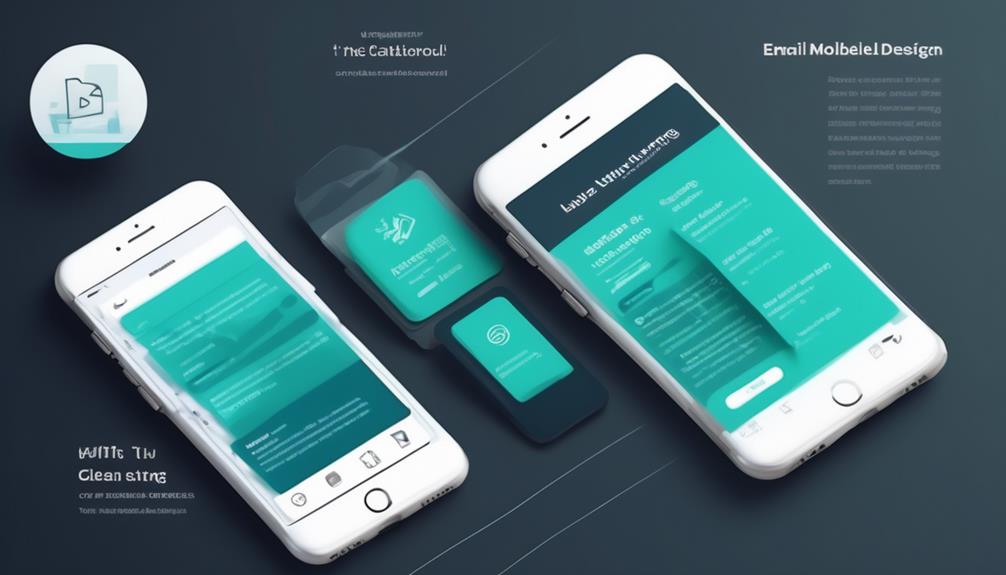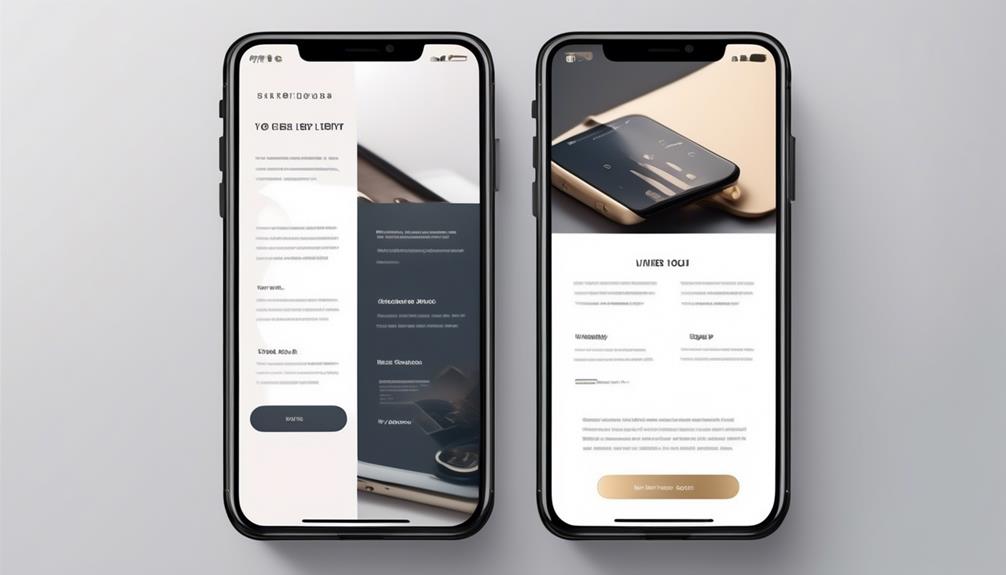To maintain consistent branding in your email design, focus on choosing a unified color palette, clear fonts, and prominent logo placement. Use these elements across all emails to build recognition, trust, and a professional look. Make sure your colors have high contrast and your fonts are easy to read. Regularly review your templates to keep everything aligned with your brand standards. Keep these tips in mind, and you’ll discover how to create cohesive emails that truly stand out.
Key Takeaways
- Use a unified color palette aligned with your brand identity to enhance recognition across all emails.
- Select consistent, legible fonts that reflect your brand style, ensuring readability and professional appearance.
- Place logos prominently, such as in the header, to reinforce brand identity and foster trust.
- Apply brand colors and fonts uniformly throughout email templates to maintain visual cohesion.
- Regularly review and update visual elements to ensure ongoing consistency and alignment with brand standards.

Maintaining consistent branding in email design is essential for building recognition and trust with your audience. When your emails reflect a unified look—using the same colors, fonts, and logos—you create a professional and memorable experience that resonates with recipients. Consistency helps your brand stand out in crowded inboxes and encourages subscribers to engage more readily. To achieve this, you should develop clear guidelines that specify your brand’s color palette, font choices, and logo placement. These elements should be applied uniformly across all emails, ensuring every message reinforces your brand identity.
Consistent branding in email design builds recognition, trust, and a professional image that enhances audience engagement.
Personalization strategies play a significant role in making your emails more relevant and engaging, but they should never compromise your visual consistency. For example, while you might customize content based on user behavior or preferences, the core design elements—colors, fonts, logos—must stay consistent. This balance helps your audience recognize your brand instantly, even when messages are tailored to their interests. Additionally, focusing on accessibility considerations is vital. Using high-contrast colors, legible fonts, and clear logo visibility ensures your emails are accessible to everyone, including those with visual impairments. Incorporating accessible design practices reinforces your brand’s commitment to inclusivity and broadens your reach.
When choosing colors, opt for a palette that aligns with your brand identity and conveys the right message. Consistent use of these colors across all communications helps reinforce brand recognition. Keep font choices simple and legible, avoiding overly decorative styles that can hinder readability. Your logo should always be prominently displayed, ideally in the header or at the top of the email, to immediately communicate your brand. Consistency in these visual elements not only boosts recognition but also builds trust as subscribers become familiar with your style.
It’s important to regularly review your email templates to verify they adhere to your branding standards. This can involve creating a style guide that details your color codes, font types, logo specifications, and layout rules. By sticking to this guide, you avoid accidental deviations that could dilute your brand identity. Remember, consistency doesn’t mean rigidity; you can adapt your design for special campaigns or seasonal themes while maintaining core elements. Additionally, understanding brand consistency and how it impacts customer perceptions is crucial for ongoing success. Ultimately, a well-crafted, consistent visual identity combined with thoughtful personalization and accessibility considerations will strengthen your brand’s presence and foster long-term relationships with your audience.
Frequently Asked Questions
How Often Should Branding Elements Be Updated in Emails?
You should update your branding elements every 12 to 24 months, aligning with your overall brand update frequency. Visual rejuvenation cycles help keep your emails looking modern and relevant, so don’t wait too long before revitalizing colors, fonts, or logos. Regularly reviewing your branding ensures it stays consistent and engaging for your audience, reinforcing your brand identity without overwhelming your subscribers with constant changes.
What Are Common Mistakes to Avoid in Email Branding?
Don’t let small slip-ups ruin your message; avoid inconsistent use of colors, fonts, and logos that harm visual consistency and brand recognition. Keep your branding elements uniform across emails, so recipients instantly identify your brand. Steer clear of overloading emails with too many styles or changing branding details frequently. This ensures your emails look professional, boost recognition, and maintain a cohesive look that resonates with your audience.
How Can Branding Be Adapted for Mobile Email Views?
To adapt branding for mobile email views, you should use responsive layouts that automatically adjust to different screen sizes. Keep mobile font sizing legible and consistent with your brand, avoiding tiny text that’s hard to read. Use clear logos and simple color schemes to reinforce your branding. Prioritize a clean design, so your message remains impactful and recognizable, no matter where your audience views it.
What Tools Assist in Maintaining Brand Consistency in Emails?
Think of brand consistency like a well-ordered library; tools like brand style guides help you stay on track. Email template builders are your trusty sidekicks, allowing you to easily apply your fonts, colors, and logos across campaigns. These tools guarantee your branding remains uniform, whether on desktop or mobile, saving you time and effort. Use them to maintain a cohesive, professional look that resonates with your audience.
How Does Branding Influence Email Open and Click-Through Rates?
Branding substantially impacts your email open and click-through rates by boosting brand recognition and fostering customer loyalty. When your emails have consistent colors, fonts, and logos, recipients quickly identify your brand, making them more likely to open and engage. Strong branding creates trust and familiarity, encouraging customers to stay loyal and interact more with your content. Ultimately, cohesive branding turns email recipients into loyal, engaged customers.
Conclusion
By maintaining consistent branding through colors, fonts, and logos, you create a memorable experience for your audience. Did you know that emails with cohesive branding are 70% more likely to be opened and remembered? When your branding is uniform, it builds trust and recognition, making your emails stand out in crowded inboxes. Keep your visuals aligned, and you’ll foster stronger connections that turn recipients into loyal customers. Consistency truly amplifies your email marketing success.









